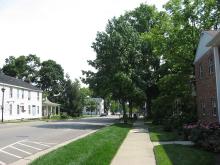Report: Wilson, N.C., Shows What’s Possible When a Broadband Network Puts Community First
In a new case study, the Institute for Local Self-Reliance explores the wide-ranging community benefits of Greenlight, the city-owned Fiber-to-the-Home network in Wilson, North Carolina. The case study details how it has been able to quickly adapt and expand service during the pandemic.
Built in 2008 with an eye toward the future and operated with local priorities in mind, Greenlight has a long track record of putting people first. A few examples are:
Access for All
- In 2016, Greenlight began a partnership with the Wilson Housing Authority (WHA) to connect hundreds of public housing residents to $10/month low-cost fast Internet access.
- The network targets barriers to service adoption that go beyond cost, including a flexpay system which allows users to prepay for Internet access instead of requiring large deposits or a credit check. It also allows users to load funds into their account for individual days of network access.
Economic Development
- Greenlight has been named as a key factor in Wilson’s economic revitalization.
- Wilson’s fiber infrastructure has helped local businesses succeed and is a factor in the relocation of new companies to the area. In 2019, Wilson was ranked the 10th best small city in the country to start a business.
- In 2016, Greenlight began co-sponsoring the GigEast Exchange Conference. The GigEast Exchange serves as a technology hub, incubator, and networking space for everyone in the community.
Education



